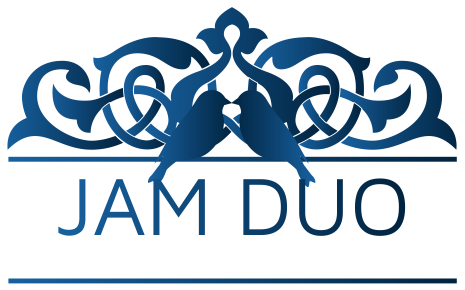Pianos, with their beautiful and complex mechanism, are not just instruments; they are a true masterpiece of engineering and artistry. Yet, to bring out the best in a piano, regular tuning is crucial. Piano tuning is a specialized skill that requires patience, precision, and an understanding of the physics of sound. In this 2000-word essay, we will delve into the art of tuning a piano, exploring the techniques, tools, and steps required to achieve perfect harmony.
Chapter 1: The Importance of Piano Tuning
1.1 Musical Integrity
Piano tuning is essential for preserving the musical integrity of the instrument. Over time, due to changes in temperature and humidity, the tension of the piano strings can fluctuate, causing it to go out of tune. Regular tuning ensures that the piano maintains its pitch and sounds its best.
1.2 Player Experience
For pianists, a well-tuned piano is not just a matter of aesthetics; it’s crucial for performance. Musicians rely on a piano’s accurate tuning to produce harmonious music and to ensure that the piano responds as expected to their touch.
Chapter 2: Understanding the Basics
2.1 The Piano’s Structure
To tune a piano effectively, one must understand its complex structure. Pianos consist of over 200 tightly wound strings, a soundboard, bridges, and a pinblock. The tuning pins, which anchor the strings, need to be adjusted to achieve the desired pitch.
2.2 Temperament
Piano tuning is not just about making every note sound right individually but also about achieving an overall harmonic balance. This concept, known as temperament, involves setting the relationships between notes to create harmonious intervals.
Chapter 3: The Tools of the Trade
3.1 Tuning Lever
The tuning lever is the primary tool for adjusting the tension of the piano strings. Tuning levers come in various shapes and sizes, and they allow the technician to turn the tuning pins with precision.
3.2 Mutes
Mutes are used to dampen the sound of the strings surrounding the one being tuned. This is crucial for isolating a single string and preventing it from interfering with adjacent strings.
3.3 Electronic Tuners
Modern piano tuners often use electronic tuners, which provide accurate visual feedback about a string’s pitch. While traditional tuning is done by ear, electronic tuners can assist in achieving precise results.
Chapter 4: The Tuning Process
4.1 Preliminary Assessment
Before beginning the tuning process, it’s important to assess the piano’s condition. Check for any obvious issues such as broken strings, loose tuning pins, or a warped soundboard. These issues may need to be addressed before tuning.
4.2 Setting a Reference Pitch
Start by setting a reference pitch, typically A4 (440 Hz), using an external reference source such as a tuning fork or electronic tuner. This note will serve as the foundation for the rest of the tuning.
4.3 Tuning the Octaves
Begin with the central octave, starting with the middle C. Tune the octaves by comparing the target note with the reference A4, making adjustments as necessary. Progress to higher and lower octaves, ensuring that the temperament remains consistent.
4.4 Tuning the Unisons
Unisons are individual strings within a single note that should sound at the same pitch. Tune these unisons to match the octaves, ensuring they are in perfect unison with each other.
4.5 Equalizing the Temperament
Once the octaves and unisons are tuned, it’s time to fine-tune the temperament. Adjust the relationships between various intervals, such as fifths and thirds, to ensure that the entire scale sounds harmonious.
Chapter 5: Challenges and Common Issues
5.1 Piano Neglect
Pianos that have been neglected for extended periods may require more than just tuning. Issues like rusted strings, loose pins, and soundboard cracks should be addressed by a professional piano technician.
5.2 Climate and Seasonal Variations
Changes in temperature and humidity can cause the piano’s pitch to fluctuate. Seasonal adjustments are often required to keep the piano in tune, especially in regions with extreme climate variations.
Chapter 6: DIY Tuning vs. Professional Tuning
6.1 DIY Tuning
While there are tuning kits and guides available for amateur piano tuning, it’s a challenging skill to master. DIY tuning may be suitable for simple adjustments but is not recommended for maintaining the integrity of valuable instruments.
6.2 Professional Tuning
Professional piano tuners undergo extensive training and apprenticeships to develop their skills. They have the expertise and experience required to tune pianos accurately and ensure their longevity.
Chapter 7: Piano Tuning and the Digital Age
7.1 Digital Assistance
The digital age has brought forth various apps and software tools that assist both amateur and professional tuners. These tools can provide visual feedback and help in the tuning process.
7.2 The Future of Piano Tuning
Technology continues to influence piano tuning with innovations like self-tuning pianos and remote tuning services. While these developments can be convenient, they also raise questions about preserving the traditional craftsmanship of piano tuning.
Chapter 8: Conclusion
Tuning a piano is a skill that marries science and art. It requires a deep understanding of the instrument’s structure, an acute ear for pitch, and the patience to fine-tune each note to perfection. A well-tuned piano is not just a musical instrument; it’s a testament to the craftsmanship that has been passed down through generations. Whether you’re a professional tuner or a piano enthusiast, the art of tuning ensures that the piano’s soul sings in perfect harmony, creating beautiful music for generations to come.



